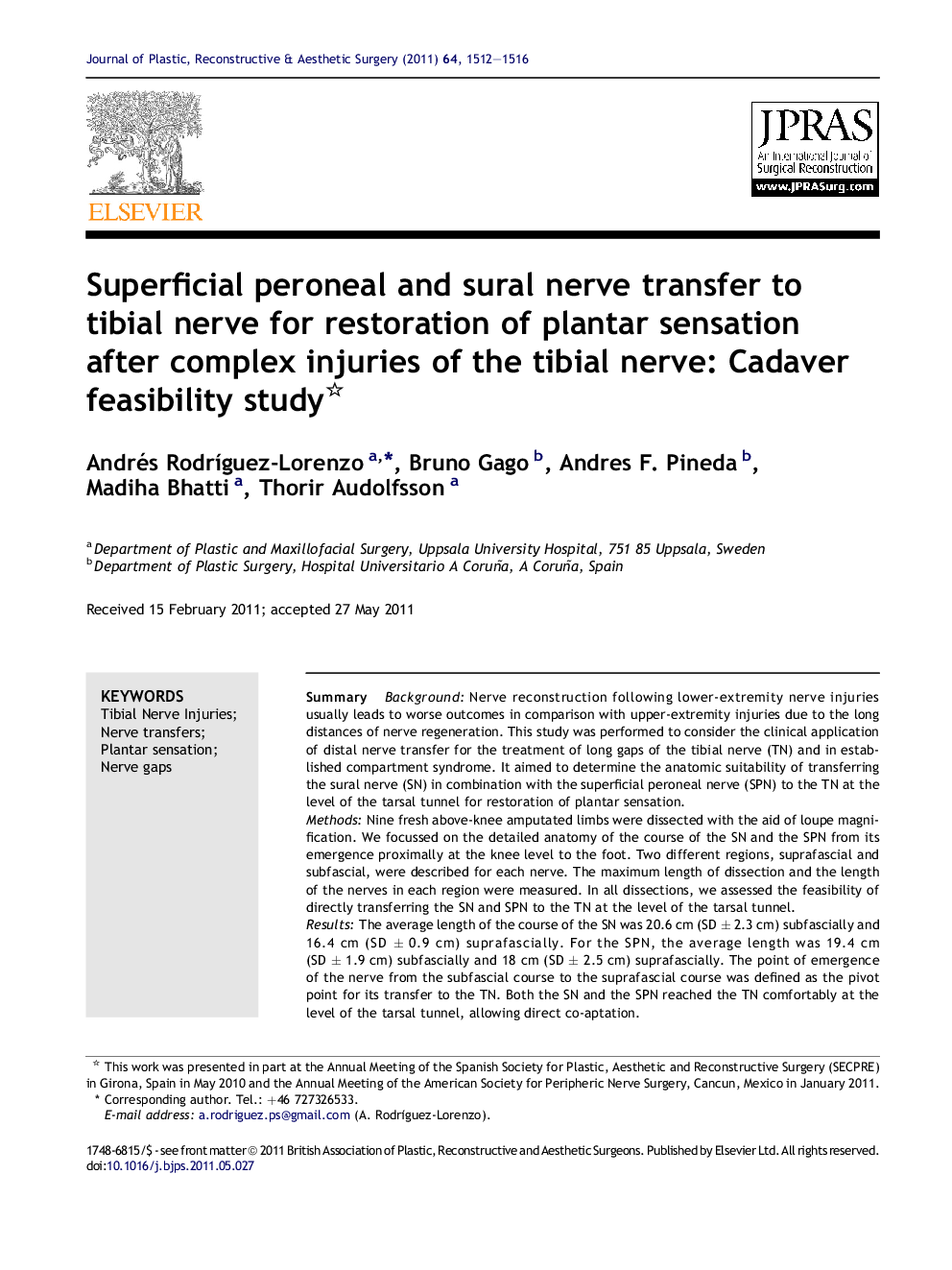| کد مقاله | کد نشریه | سال انتشار | مقاله انگلیسی | نسخه تمام متن |
|---|---|---|---|---|
| 4118609 | 1270335 | 2011 | 5 صفحه PDF | دانلود رایگان |

SummaryBackgroundNerve reconstruction following lower-extremity nerve injuries usually leads to worse outcomes in comparison with upper-extremity injuries due to the long distances of nerve regeneration. This study was performed to consider the clinical application of distal nerve transfer for the treatment of long gaps of the tibial nerve (TN) and in established compartment syndrome. It aimed to determine the anatomic suitability of transferring the sural nerve (SN) in combination with the superficial peroneal nerve (SPN) to the TN at the level of the tarsal tunnel for restoration of plantar sensation.MethodsNine fresh above-knee amputated limbs were dissected with the aid of loupe magnification. We focussed on the detailed anatomy of the course of the SN and the SPN from its emergence proximally at the knee level to the foot. Two different regions, suprafascial and subfascial, were described for each nerve. The maximum length of dissection and the length of the nerves in each region were measured. In all dissections, we assessed the feasibility of directly transferring the SN and SPN to the TN at the level of the tarsal tunnel.ResultsThe average length of the course of the SN was 20.6 cm (SD ± 2.3 cm) subfascially and 16.4 cm (SD ± 0.9 cm) suprafascially. For the SPN, the average length was 19.4 cm (SD ± 1.9 cm) subfascially and 18 cm (SD ± 2.5 cm) suprafascially. The point of emergence of the nerve from the subfascial course to the suprafascial course was defined as the pivot point for its transfer to the TN. Both the SN and the SPN reached the TN comfortably at the level of the tarsal tunnel, allowing direct co-aptation.ConclusionDistal nerve transfer using the SN in combination with the SPN is an anatomically reliable procedure, being a potential alternative to the use of nerve grafts in reconstruction of long gaps of the TN. In addition, selected patients with compartment syndrome may also benefit from this transfer to restore plantar sensation.
► We assessed the anatomical feasibility of transferring the sural and superficial peroneal nerve to the tibial nerve for restoration of plantar sensation after complex tibial nerve injuries.
► The point of emergence of both nerves in the fascia was defined as the pivot point for the transfer.
► Both nerves reached the tibial nerve comfortably at the level of the tarsal tunnel, allowing direct nerve co-aptation.
Journal: Journal of Plastic, Reconstructive & Aesthetic Surgery - Volume 64, Issue 11, November 2011, Pages 1512–1516